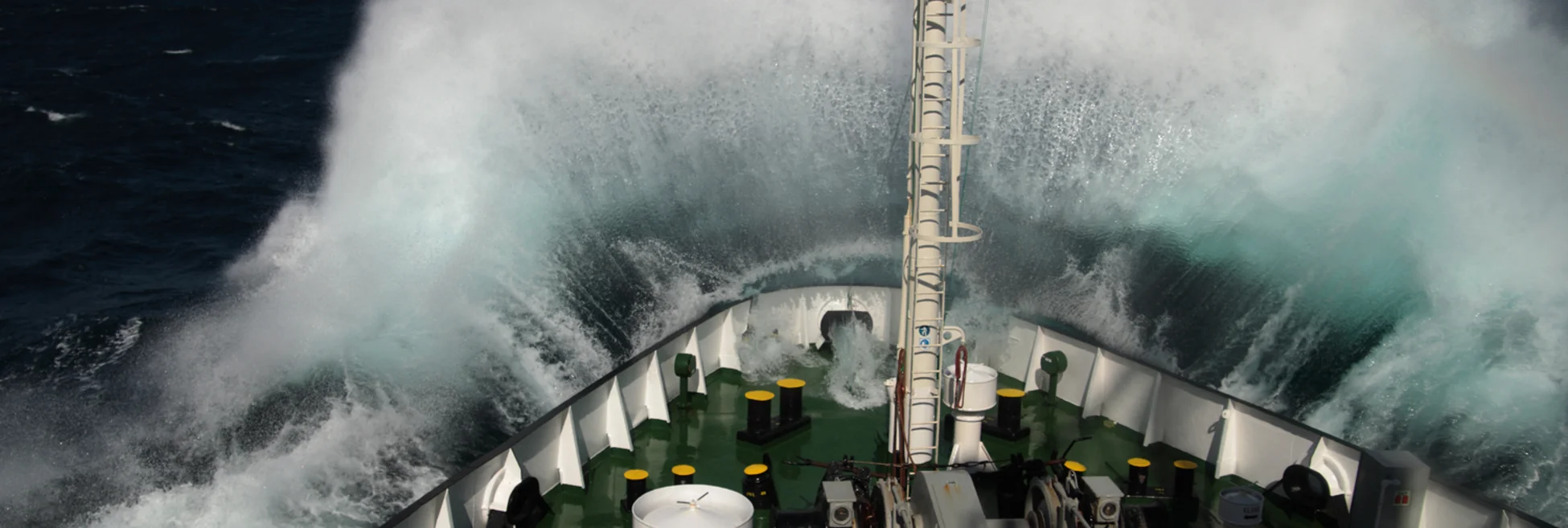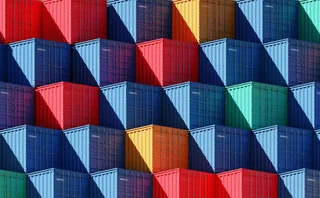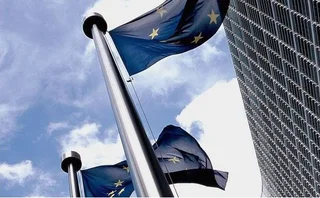

All aboard for LNG freight derivatives?
Tools to manage LNG freight risk were developed last year, but how is the market responding?
Need to know
- A sea change in the way liquefied natural gas (LNG) is traded is leaving more firms exposed to freight risk. As a result, several firms developed tools last year to enable LNG freight hedging.
- The Baltic Exchange and Spark Commodities produced LNG freight indexes and the CME Group launched the first LNG freight future.
- In July the first LNG freight swap settled against Baltic Exchange assessments.
- In September, the first swap against one of Spark Commodities’ indexes was executed by Glencore and Socar Trading.
- On December 23, Vitol and Trafigura traded CME’s LNG freight future. Since then there have been a handful of trades and some new enquiries into the market, brokers say.
- Axpo says it intends to trade the CME contract and is optimistic about its future.
- Meanwhile, Ice is likely to launch its own LNG freight contract this year, according to its managing director of utility markets, Gordon Bennett.
- A thriving LNG hedging market is developing, with futures based on the Japan-Korea Marker and Dutch TTF emerging as the most liquid.
- Being able to hedge LNG freight would be the last part of the puzzle.
In recent years there has been a sea change in the way liquefied natural gas (LNG) is traded. It has shifted from a market predominantly based on long-term contracts priced against oil, to one with a growing spot market where cargoes are generally priced using the gas market. While this makes for more flexibility, it also leaves more companies than ever before exposed to LNG freight prices, something that was usually included in the long-term fixed deals. And while gas-on-gas pricing has allowed the development of a robust LNG hedging market, up until now there have been very few tools available to hedge LNG freight.
“Freight in LNG is definitely difficult to hedge,” says Marco Saalfrank, head of continental Europe merchant trading and member of the management board of the trading and sales business unit at Swiss energy company Axpo. “Until now, [freight risk was managed] by the market essentially chartering in and out physical vessels,” he says. This has always been a barrier to entry for smaller players looking to buy LNG on a free-on-board basis, where the buyer pays shipping costs, Saalfrank adds.
The lack of hedging tools has become a bigger problem recently because of eye-watering volatility in LNG freight prices. Freight costs have also become a larger proportion of the cost of an LNG trade. This galvanised a number of service providers into action last year, with the Baltic Exchange and start-up firm Spark Commodities both producing LNG freight indexes and the CME Group launching the first LNG freight future in December 2019. Other firms are standing by, and more LNG freight-related launches are expected this year. While it remains to be seen which firms will emerge winners, demand for LNG freight hedging tools is definitely on the rise.
Saalfrank told Risk.net in an email that Axpo is “working internally to get set up as soon as possible” in LNG freight, believing the CME contracts will enable it to grow its portfolio and diversify its activities.
The ability to hedge freight costs means traders could buy LNG from regions where it is cheaper, purchasing gas at an earlier point and using spot charters to transport the cargo while limiting exposure to freight rate fluctuations. “Users can take paper coverage and take a ship from the physical spot market, knowing they’ve already locked in a rate,” says Benjamin Gibson, London-based head of LNG derivatives at ship broker Affinity, who arranged the first swap to settle against a Spark Commodities index.
Market participants estimate that around 20% of LNG trades now take place on the spot market as opposed to fixed long-term contracts, thus leaving a significant number of firms exposed to freight prices.
“Freight is now a significant part of the delivery risk and with more gas now being traded on a delivery-ex-ship basis, it’s become something that has really stuck in people’s minds in terms of how to hedge exposure to that,” says James Whistler, Singapore-based global head of energy derivatives at ship broker Simpson Spence Young (SSY).
In addition, over the past few months, freight rates themselves have become particularly volatile and unpredictable. Charter rates for the key Gladstone, Australia-to-Tokyo LNG freight route soared 675% between March and October last year, from $22,853/day to $177,111/day on October 25, 2019, according to the Baltic Exchange (see table A).
“LNG freight was one of the most volatile commodities of last year,” says Owain Johnson, global head of product development and research at the CME Group. “There has been incredible volatility over the last seven months – with price changes of 30% in a day, which is really unprecedented. So I think that makes for massive interest in hedging and locking in prices.”
Much of the volatility can be attributed to seasonal issues and the oversupply of natural gas in global markets, says Trevor Sikorski, London-based head of natural gas and carbon at research firm Energy Aspects. “An underlying contango in the gas markets has encouraged storage,” he says. Ships used as floating storage tanks to take advantage of this situation are taken out of the market, causing rates to spike in the run-up to winter. “The freight rates tend to spike as traders do a September-to-November carry or an October-to-January carry, for example. It’s reasonably expensive to float LNG, so a lot of those trades start to come out of the market by the end of Q4,” Sikorski says.
In this low natural gas price environment, the cost of freight as a percentage of the underlying delivered cost of LNG has increased substantially. SSY calculates that between January 2018 and January 2020, freight grew from 9% to 20% of the cost of spot cargoes priced against the S&P Global Platts Japan-Korea Marker (JKM), the benchmark price assessment for cargoes into north Asia.
Meanwhile, the outlook for rates remains choppy. While the coronavirus is dampening imports into China and lowering freight prices in general, the continued growth of LNG spot trading could underpin prices. “It’s undeniable that the LNG industry as a whole is moving towards spot exposure and away from oil-linked contracts,” says Whistler at SSY. For contracts priced against oil, LNG could be trading at an equivalent of $7 to $8 per million British thermal units (MMBtu), while the JKM spot price is $3/MMBtu, he says. “Those economics cannot continue,” he adds, pointing out that they incentivise more spot trading.
The battle to bring hedging tools to the LNG freight market began last year. The Baltic Exchange – the 200-year-old stalwart of the global shipping markets, acquired by Singapore Exchange in 2016 - trialled price assessments on three LNG shipping routes over the course of 2019. BLNG1 covers a round voyage (RV) from Gladstone, Australia to Tokyo; BLNG2 is Sabine, US to Isle of Grain, UK RV; and BLNG3 covers Sabine to Tokyo RV via the Panama Canal.
In July the first LNG freight swap took place, brokered between Total Gas & Power and Glencore and settling against Baltic Exchange assessments.
Meanwhile, in April, European Energy Exchange and French cargo-tracker Kpler launched Singapore-based Spark Commodities, which has developed a number of LNG freight indexes. In September, the first swap was executed by commodity traders Glencore and Socar, trading against the Spark25 Pacific route assessment for North West Shelf, Australia to Tianjin, China.
At the end of October last year, SGX pulled its LNG spot price indexes – Sling – after four years in the market, as traders gravitated towards the JKM. “We came to the decision that Sling was not at that time getting enough interest and adoption, so we should focus our attention on LNG freight,” William Chin, head of commodities at SGX, says. “We put out the BLNG indices via the Baltic Exchange as a way to address supply increases from the US and Australia, to feed demand in Asia.”

By December 23, 2019, the CME group had launched three LNG freight futures contracts based on the Baltic’s indexes, with an initial transaction between commodity traders Vitol and Trafigura, brokered by Clarksons, executed that same day. The CME contracts are priced according to the average US dollar per day rate for the specific route for cargoes of 160,000 cubic metres.
Commenting on the speed with which its benchmarks were adopted by the market, Lu Su Ling, head of the Baltic Exchange Asia, says: “It’s unprecedented for the Baltic Exchange to have gone live on an index and then have it cleared through an exchange within a matter of months, so I think that’s indicative of the interest and demand for hedging with these sorts of indices.”
It’s unprecedented for the Baltic Exchange to have gone live on an index and then have it cleared through an exchange within a matter of months, so I think that’s indicative of the interest and demand for hedging with these sorts of indices
Lu Su Ling, Baltic Exchange
However, since the initial surge of enthusiasm, activity has been slow, leaving some to question whether the market will gain traction this year.
“There is definitely demand for this. We’ve been talking to customers for at least six to nine months, and organisations are keen for a cleared product,” says Gordon Bennett, managing director, utility markets at Ice. The exchange may launch a contract this year, according to Bennett, once it has chosen a benchmark provider. However, he believes it’s “early days” for this market. “There have been a handful of OTC trades, so the market is still young. What normally happens is that there is a bit more OTC trading in the paper markets and then perhaps demand grows for an exchange product, but some more standardisation has usually taken place before it can get on an exchange.”
Cleared activity in LNG freight futures has been slow (see figure 1), but CME Group’s Johnson points out that the initial trades happened quickly. “We were pleased that trading got off the ground so quickly because most futures are slow burners. For this one, I think there was some pent-up demand,” he says.
Indeed, it’s no surprise to see commodity trading houses take the lead in this market, but others that could participate are hanging back. Christian Greenop, a London-based freight derivatives broker at Clarksons, says that since the initial CME trade, the brokerage has been involved in “a couple of other trades with new counterparties” and has received enquiries from a range of organisations, including shipowners, charterers, funds and banks.
“The liquidity will be the main hurdle for the balance of the year,” Greenop continues. “Obviously, there is a process for counterparties to get onboarded and it’s quite hard to trade in a product that’s just not really trading in a liquid sense; it’s daunting if you’re not sure you can get out properly. So I think it will just take time to get liquidity to a point where more organisations are happy to participate.”
Axpo is optimistic about the development of the market. “After discussing with several customers, Axpo believes these contracts have a bright future and many companies that have shipping exposure will follow the development of this market very closely – at least all the ones with a trading mindset, with trading houses leading the effort,” Saalfrank says. “That being said, Axpo also believes the liquidity of such contracts will take a while to be developed enough so that the market is efficiently supported.”
Changing trading patterns
As LNG becomes more commoditised and more globalised, price correlations between regions have become stronger. LNG imports into Asia, for example, exert an influence on European prices that wasn’t there a few years ago. As a result there has been a huge uptick in European traders trading the spread between JKM and the Dutch TTF gas hub.
According to figures from Ice, JKM futures and options trading was up 223% in 2019 versus 2018. TTF futures and options trading rose 103% between 2018 and 2019, with TTF trading representing 66% of all European gas trading last year, up from 57% in 2018.

“JKM and TTF have a symbiotic relationship,” says Ice’s Bennett. “If you’re trading one, you’ll start trading the other. You cannot look at those contracts in isolation any more, so there is a lot of growth potential and we are very bullish about both JKM and TTF,” he says.
With markets now more closely linked and with increased flexibility to move cargoes around based on market prices, the need for freight hedging is likely to rise, say market participants.
Bennett believes Ice’s strong presence in JKM-TTF puts it in a good position to launch a successful LNG freight product in 2020, despite the CME Group’s head start.
Other market players agree that an LNG freight contract would be a useful addition to a portfolio of global natural gas products. “We would like to see Ice list an LNG freight contract because the Ice JKM contract is so strong at the moment,” says SSY’s Whistler. “We’d like to be able to trade an Ice package around JKM, TTF and LNG freight.”
Meanwhile, Baltic’s Lu says the index provider is in talks with other exchanges in this space. “Since the launch of the CME contracts at the end of December, we have seen a lot of interest from all of the other exchanges that we work with,” she says. “We do anticipate other exchanges going live with this too.” She adds that, while timelines have not been confirmed, there has been “active interest” in this respect.
David & Goliath
Ice, for one, has still to choose a benchmark provider for its LNG freight contract, according to Bennett. The Baltic Exchange and Spark Commodities will be contending for the position.
What Spark lacks in experience, it makes up for in agility, being able to move quickly to satisfy customer demand, argues its managing director Tim Mendelssohn, a former trader at Koch Supply & Trading. The assessment methodology Spark uses is similar to that of the Baltic Exchange, but he says it provides the market with a greater choice of structures, linked to both LNG cargoes (via front-month assessments) and freight markets (via spot assessments). This, coupled with wider market participation, a forward curve assessment (12 months out) and tools to help users visualise how the market evolves “provides a much richer data set from which to take positions in the market or to formulate a view”, he says.
More than 70 organisations now have access to Spark’s platform, according to Mendelssohn, who adds that the company is also discussing the potential for a listed product with a number of exchanges. Although he cannot reveal names or timelines at this stage either, he hints that 2020 will be a “big” year for the market and for Spark Commodities. “Lots of products that spread liquidity make it much harder for the trading community, so I expect multiple horses to start running this race. But I expect it to finish as a one-horse race,” he says.
And while an exchange is yet to announce a partnership with Spark that might propel it to the finish line, no-one is dismissing the start-up’s potential. Even the CME’s Johnson points out that the exchange is supplier-neutral and could work with a different provider in the future. “We’ve got about 15 different partners in the commodities space,” he says. “We really like what Spark is doing. Our initial interest was in the Baltic Exchange, but we wouldn’t rule anything out further down the line. We never try and call the market, we respond to what the market wants.”
It certainly seems that the market wants tools to manage a potentially growing LNG freight risk and that 2020, therefore, could be an important year in market development.
Only users who have a paid subscription or are part of a corporate subscription are able to print or copy content.
To access these options, along with all other subscription benefits, please contact info@risk.net or view our subscription options here: http://subscriptions.risk.net/subscribe
You are currently unable to print this content. Please contact info@risk.net to find out more.
You are currently unable to copy this content. Please contact info@risk.net to find out more.
Copyright Infopro Digital Limited. All rights reserved.
You may share this content using our article tools. Printing this content is for the sole use of the Authorised User (named subscriber), as outlined in our terms and conditions - https://www.infopro-insight.com/terms-conditions/insight-subscriptions/
If you would like to purchase additional rights please email info@risk.net
Copyright Infopro Digital Limited. All rights reserved.
You may share this content using our article tools. Copying this content is for the sole use of the Authorised User (named subscriber), as outlined in our terms and conditions - https://www.infopro-insight.com/terms-conditions/insight-subscriptions/
If you would like to purchase additional rights please email info@risk.net
More on Commodities
Energy Risk 2024 Software Rankings: IT demands increase amid rising risk
Heightened geopolitical and credit risk increase requirements on commodities software
Energy Risk Asia Awards 2023: the winners
Winning firms demonstrate resiliency and robust risk management amid testing times
ION Commodities: addressing the market’s recent pain points
Energy Risk Software Rankings winner’s interview: ION Commodities
Energy Risk Commodity Rankings 2023: adapting to new market dynamics
Winners of the 2023 Commodity Rankings provided reliability when clients faced extreme change
Energy Risk Software Rankings 2023: managing uncertainty
Unpredictable markets make CTRM software choices key
Navigating the volatility and complexity of commodity markets
Commodity markets have experienced significant challenges since the Covid-19 pandemic, the conflict in Ukraine and the subsequent sanctions imposed on Russia. These unprecedented events have caused fluctuations in supply and demand, disrupted global…
Energy Risk Asia Awards 2022
Recognising excellence in energy risk management
Market shrugs off EC’s plan to change gas benchmark
Dutch TTF prices unmoved, as market participants say they are “not taking it seriously”







